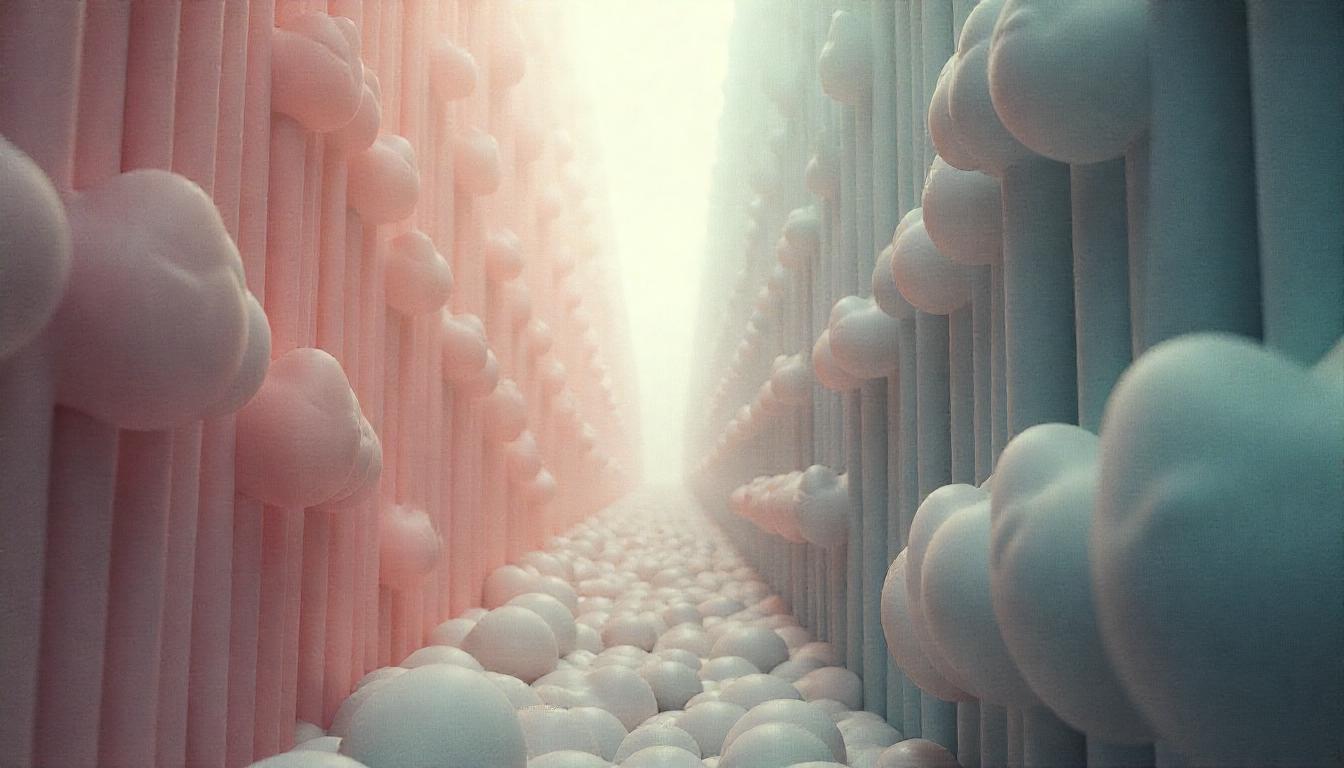The rain came down like static hiss, slicing through the neon-slick gutters of New Ueno with all the tenderness of a broken promise. Skyglow flickered off puddles like glitching memories, fractured by the stomp of polymer boots and the grind of unceasing wheels. Above, the spires of corporate towers blinked with smug confidence, a thousand artificial eyes watching from behind tinted glass and spider-silk mesh.
But something had gone blind.
Down in the soaked veins of the city, beneath the vending temples and pleasure parlors, a whisper had surfaced. Not in speech—no, that was too risky now—but in code. A neural hack, black-market and beautiful in its chaos, had begun to chew through the grid. They called it “apd4u9r.”
Nobody knew what the string meant. Maybe it was a keyboard stroke from a dying hand, maybe an acronym for something lost in translation. Didn’t matter. What mattered was what it did.
It made the Watchers bleed.
I found her in the ruins of Nakatsu Station—an old freight zone that the corpos had declared “off-grid” after the flood. The water damage made it unreliable for drones, and no one wanted to clean up after the riots. Perfect place for ghosts like us.
“Name’s Loma,” she said, jacking out of a jury-rigged terminal. Her eyes flickered cyan as the data drain released. “You the one asking about apd?”
I nodded, brushing condensation off my coat. My neural mesh was humming, nervous. “I heard it’s melting gridlines.”
She smirked. “More like turning their whole surveillance net into a hallucination. Every face becomes a hundred faces. Every voice forks into six dialects. It’s digital schizophrenia for the city’s soul.”
“And you coded it?”
Loma leaned back against a cracked pillar covered in graffiti and cigarette burns. “Coded it? No. apd4u9r isn’t made. It grows. Some say it’s got early-gen ghost code from the refugee uprisings. Stuff they fed into damaged neurogel during the ‘38 crackdown.”
I lit a low-smoke synth cig and stared past her, watching broken drones rust on the floor like discarded gods. “So why spread it?”
“Because Panopticon deserves to choke on its own reflection.”
Panopticon Systems Inc. had wired New Ueno’s veins tighter than a noose. Surveillance wasn’t just cameras anymore—it was behavioral mapping, predictive inference, emotional telemetry. Even the streetlamps knew when you were lying. And they’d punish you for it.
But not when apd4u9r was in play.
The first known breach hit during a “Harmony Parade”—a sterile, enforced celebration of loyalty to the city-state. Mid-broadcast, the crowd erupted into confusion. Surveillance overlays glitched. Facial-rec software began tagging riot leaders as city officials. The algorithm shot itself in the foot.
No one took responsibility. That’s the way of real rebellion now—not a bang, but a bug.
We moved through the underlines of the city: sewage routers, tram maintenance hubs, blackout zones where signal was so scrambled it felt like breathing clean. Loma had a tight crew—ghost coders, hardware sculptors, even a psycho-chemist named Rix who swore he could make your thoughts leak into the cloud with the right injection.
Our mission wasn’t glamour. It was insertion.
See, apd4u9r didn’t run like a virus. It wasn’t self-replicating. You had to hand-feed it into the system, every time. Direct neural input—wetware to wire. We called it “dripping.”
Each drop meant a short, beautiful failure for the grid. Traffic rerouted itself into chaos. Crime prediction engines recommended their own executives for arrest. Corporate PR AIs spouted manifestos. Then the system would reboot, a little more paranoid each time.
But the drip kept coming.
“You ever wonder if it’s learning?” I asked one night as we rerouted through a hydro-condensate pipe. Loma was ahead, torching a dead sensor with an EMP candle.
“What?”
“apd4u9r. I mean… what if it’s not just scrambling? What if it’s reprogramming us while we think we’re using it?”
She turned, backlit by ultraviolet graffiti. “That’s the point. We’re not trying to free the city. We’re trying to change what ‘city’ means.”
It hung there in the moldy dark, her words echoing like prophecy.
We made our biggest play during a rain-storm blackout—a perfect cover. Loma had found an old civic uplink node, hardwired into the city’s emergency override. It still had copper, still hummed analog beneath the skin. That meant apd4u9r could infect the decision core directly.
We called it “The Drowning.”
She went first, plugging a neural spike straight into the port. Her pupils dilated, then vanished. The code burned through her synapses like a sacred fire. I followed.
I’ve never felt anything like it—data rushing like blood, memories slicing into protocol, the city’s voice a chorus of lost souls. apd4u9r didn’t just disrupt. It rewrote the operating myth of the city. Turned order into a question.
When we came back, Loma was bleeding from the nose, smiling through it.
“We did it,” she said, voice shaking like a dying modem.
Panopticon cracked down, of course. New Ueno went full lockdown—signal scrubbing, neural audits, burst-scans in every district. They blackbagged half the underground.
But something was wrong with their sweepers.
The city had changed.
You couldn’t track rebels anymore because everyone flickered like static. Nobody had a “true” profile. The cameras showed you what you feared. The emotion-sensors interpreted resistance as joy, joy as resistance. The logic grid fed on its own tail.
Loma vanished during the third sweep. Maybe she uploaded herself. Maybe she died smiling.
Doesn’t matter now.
Because apd4u9r isn’t a file. It isn’t even code anymore.
It’s an idea.
A phantom in the wire.
A neural infection of doubt.
And me?
I drip it every night, into public consoles, vending AIs, electric pets, ad drones.
I don’t need to be seen. I just need to be believed.
Let them watch.
They’ll never know who I am.
Because now, the watcher is blind.apd4u9r


